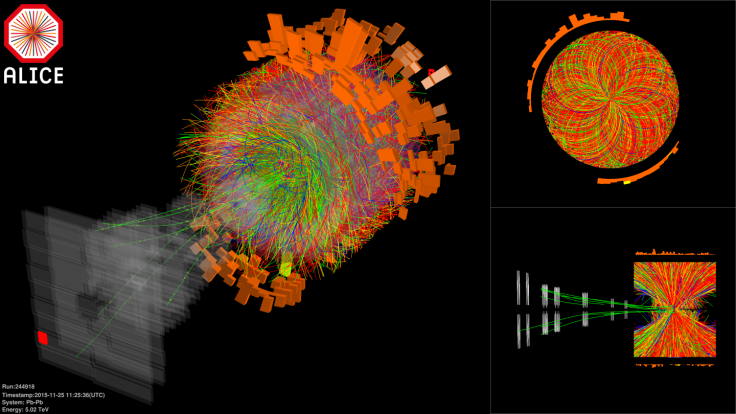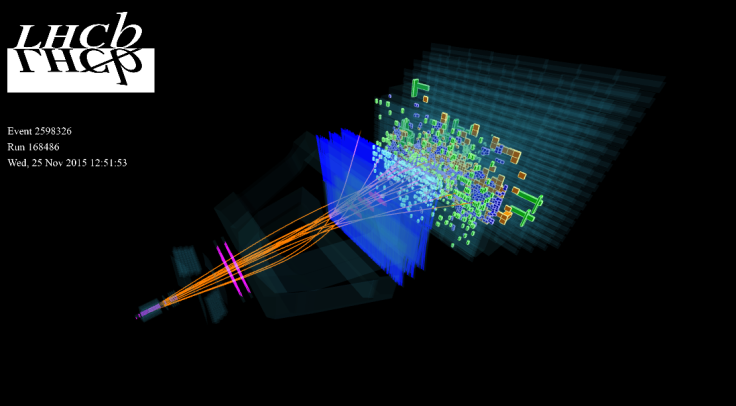CERN LHC Update: Large Hadron Collider Smashes Energy Record With Lead Ion Collisions

In a major step toward understanding what the universe was like moments after the Big Bang, scientists at CERN’s Large Hadron Collider (LHC) on Wednesday began colliding stable beams of lead ions -- lead atoms stripped of negatively charged electrons -- at unprecedented energies. The LHC was successful in colliding lead ions at 1,045 teraelectronvolts (TeV), which is approximately twice as high as that of any previous collider experiment.
“It is a tradition to collide ions over one month every year as part of our diverse research programme at the LHC,” CERN Director-General Rolf Heuer said, in a statement marking the occasion. “This year however is special as we reach a new energy and will explore matter at an even earlier stage of our universe.”
The universe, in its infancy, was filled with a dense primordial “soup” of quark-gluon plasma, which, as the name suggests, is a mixture of quarks -- the fundamental particles that make up protons and neutrons, and gluons -- the force carriers that bind quarks together. In order to recreate these conditions, massive ions -- such as gold or lead -- are made to collide head-on, creating a miniscule fireball in which everything “melts” into a quark-gluon plasma.

Increasing the collision energy will increase the volume and the temperature of the quark-gluon plasma. This, in turn, would give scientists a better chance of understanding this exotic substance and might even provide a glimpse into the ever-present question -- why is there something rather than nothing.
“The heavy-ion run will provide a great complement to the proton-proton data we’ve taken this year,” Dave Charlton, the spokesman for CERN’s ATLAS collaboration, said, in the statement, referring to the proton-run that successfully smashed protons at a record energy of 13 TeV. “We are looking forward to extending ATLAS' studies of how energetic objects such as jets and W and Z bosons behave in the quark gluon plasma.”

During the LHC’s “Season 1,” researchers confirmed the existence of a phenomenon known as jet quenching -- wherein the subatomic particles generated during collisions lose energy as they pass through the quark-gluon plasma. Measurements of higher jet energies will allow a more detailed characterization of this “very interesting” state of matter, CERN said, in the statement.
© Copyright IBTimes 2024. All rights reserved.






















